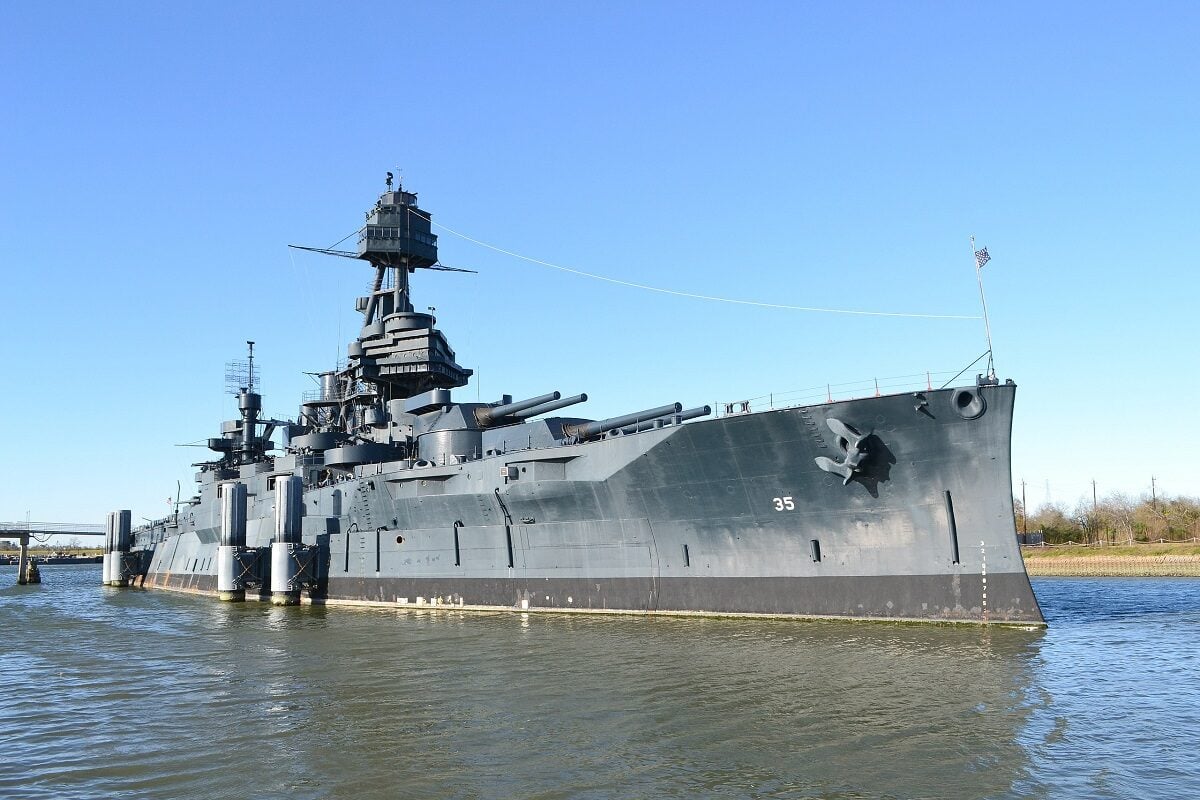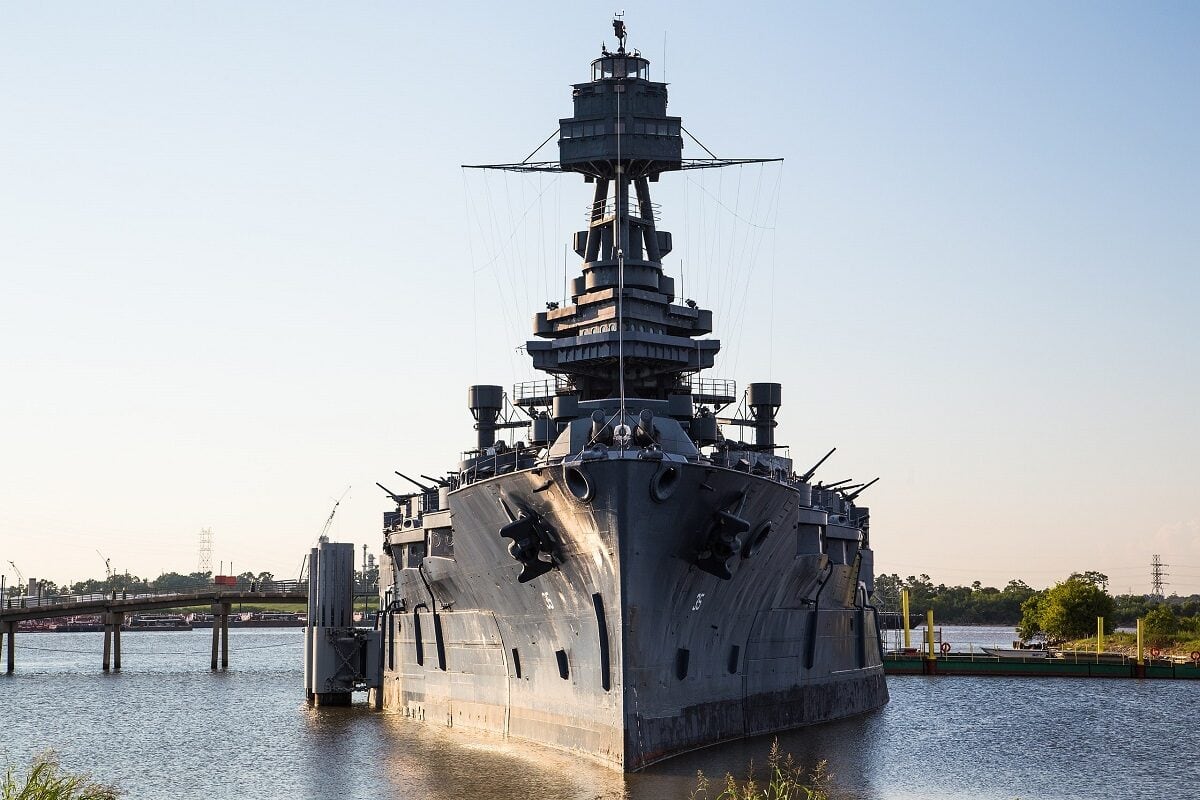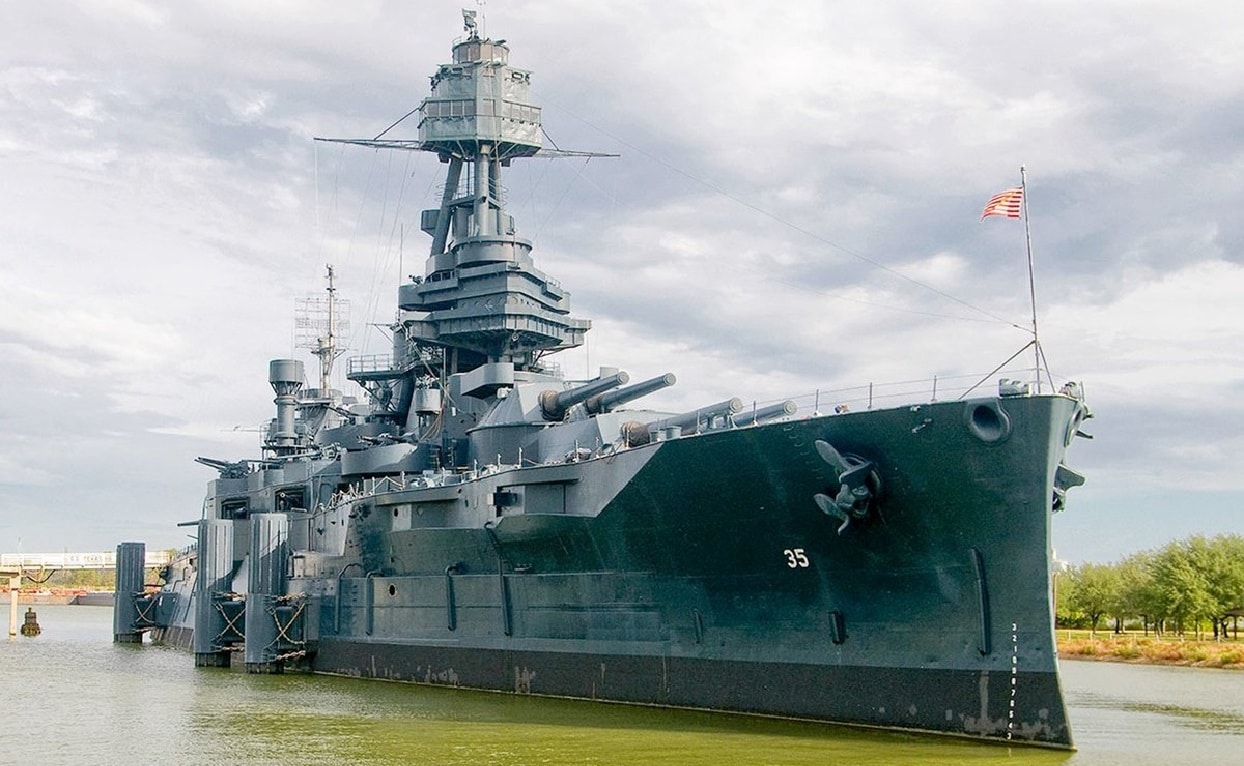Building a warship has always been a costly endeavor – but until the advent of the aircraft carrier, the most costly warships were battleships. Few nations could afford more than a few of the behemoths, but in the early 20th century the U.S. Navy began a new effort to modernize its fleet with the New York-class, which was designed to be more heavily armed and armored than the previous Wyoming-class.
USS New York (BB-34), along with her sister ship USS Texas (BB-35), were the first warships designed to carry 14-inch (356mm/45-caliber) guns. Each cost around $5.8 million when ordered in 1910, and that price excluded the price of armor and armament.
BB-35 was also notable for being the only battleship still in existence today to have taken part in combat operations in both World Wars. Since her decommissioning in 1948, USS Texas has been preserved as a museum ship – and today she is officially the flagship of the “Texas Navy.”
She remains the first permanent battleship memorial museum in the United States. The ship, which was once described as “the most powerful weapon in the world,” is currently moored in the Houston Ship Channel near the San Jacinto battleground site – the location where Texian troops led by Gen. Sam Houston surprised and quickly defeated the Mexican Army in 1836 – where the warship has been for more than 70 years.
Those seven decades have not been kind to the vessel, and the ship has long been overdue for some much-need repair, which will soon be reportedly carried out in Galveston at the Gulf Cooper & Manufacturing Corporation’s shipyard.
With the help of the Battleship Texas Foundation and Valkor Energy Services, Gulf Copper recently acquired a floating drydock capable of lifting the ship out of the water for necessary and extensive hull repairs, KHOU reported.
The location of the yard will significantly reduce risk, since the tow is both in sheltered waters, while the distance to the drydock is significantly shorter than other potential options. USS Texas is expected to enter the drydock by the second quarter of next year.
Expensive to Maintain
The Battleship Texas Foundation, which maintains and preserves the ship under a 99-year memorandum of understanding from the Texas Parks and Wildlife Department (the owners of the battleship), has said the new drydock acquisition was a critical milestone in Battleship Texas’s $35 million hull repair project.
In 2019, the Lone Star State’s legislature passed SB-1511, directing the Texas Parks and Wildlife to enter a 99-year lease with a qualified nonprofit to operate the ship. At the same time, the state lawmakers appropriated the $35 million to fund the repairs of the warship – a cost that is almost seven times as high as the original price tag to build the warship more than 100 years.
After repairs, USS Texas will likely head to a new home, and three Texas Gulf cities have bid for the final docking. These include Baytown, a small industrial community east of Houston; Beaumont, which is only in the early stages of formulating a proposal for the ship; and Galveston, which has two locations under consideration, the Texas Standard reported.
At issue is that about 80,000 people have visited the ship annually, not enough to cover the operating costs. It clearly takes money to keep even a decommissioned ship afloat and the Battleship Texas Foundation estimates that at least 250,000 paying visitors need to come out and see the ship. The goal with a new location is to get in the crowds.
“We have to figure out which one is the best deal and gives us the best shot at enough revenue so that the ship pays for itself,” said the foundation’s president and CEO, Tony Gregory.
However, the city of Beaumount, which has estimated it could cost at least $10 million to relocate the ship to its shores may not even want to be considered.
“If the Houston area could not sustain 250,000 visitors a year,” Mayor Robin Mouton was quoted in an interview by the Beaumount Enterprise. “I don’t see us having 250,000 visitors a year. Is it worth us as a council risking the entire city and taxpayers dollars to see if one project will work in our city when Houston and Harris County couldn’t do it?”

Image: Creative Commons.

Image: Creative Commons.
Even if Beaumout should pass, the flagship of the Texas Navy will likely find a good home, and hopefully can actually attract those quarter of million annual visitors.
Peter Suciu is a Michigan-based writer who has contributed to more than four dozen magazines, newspapers and websites. He regularly writes about military small arms, and is the author of several books on military headgear including A Gallery of Military Headdress, which is available on Amazon.com.

